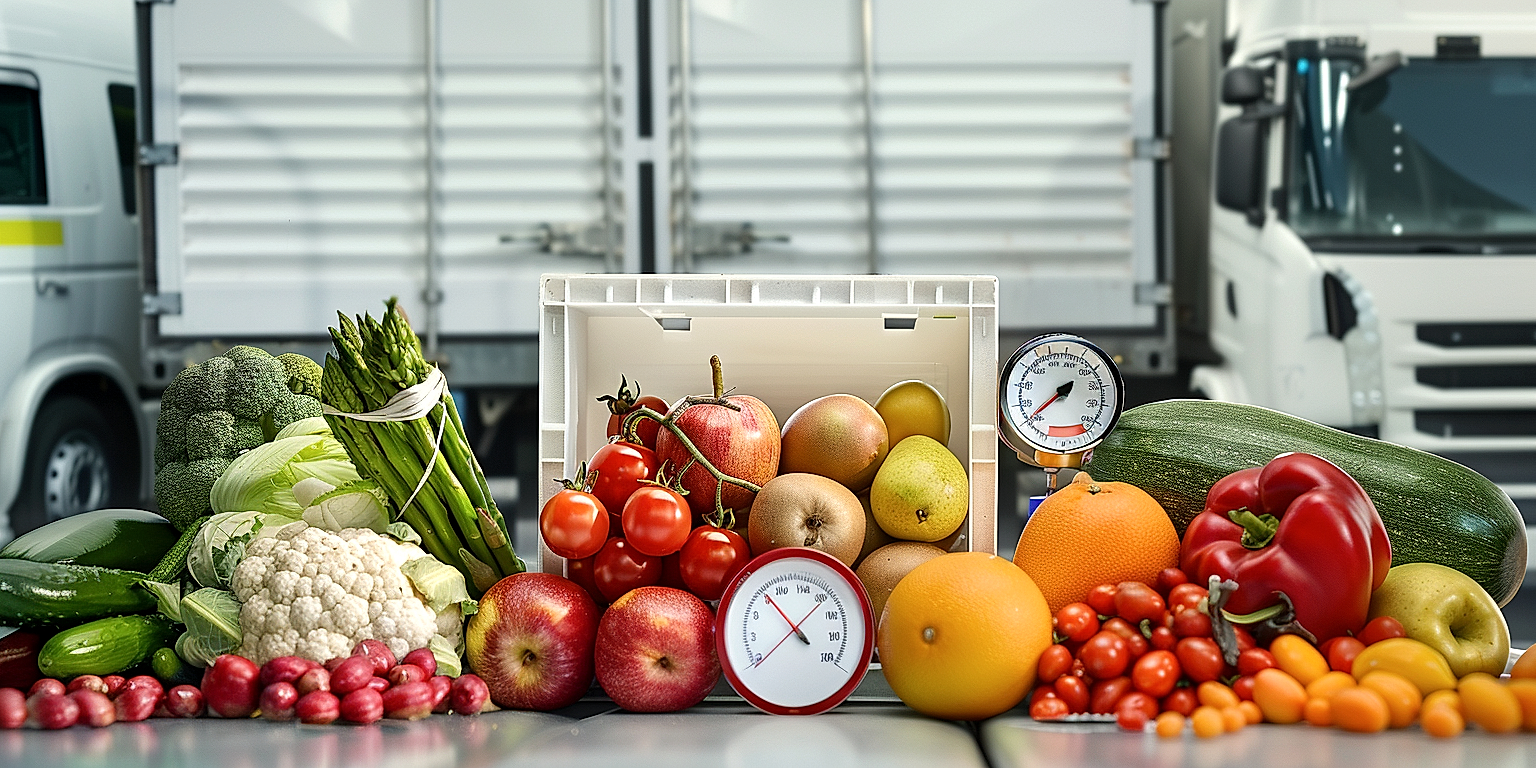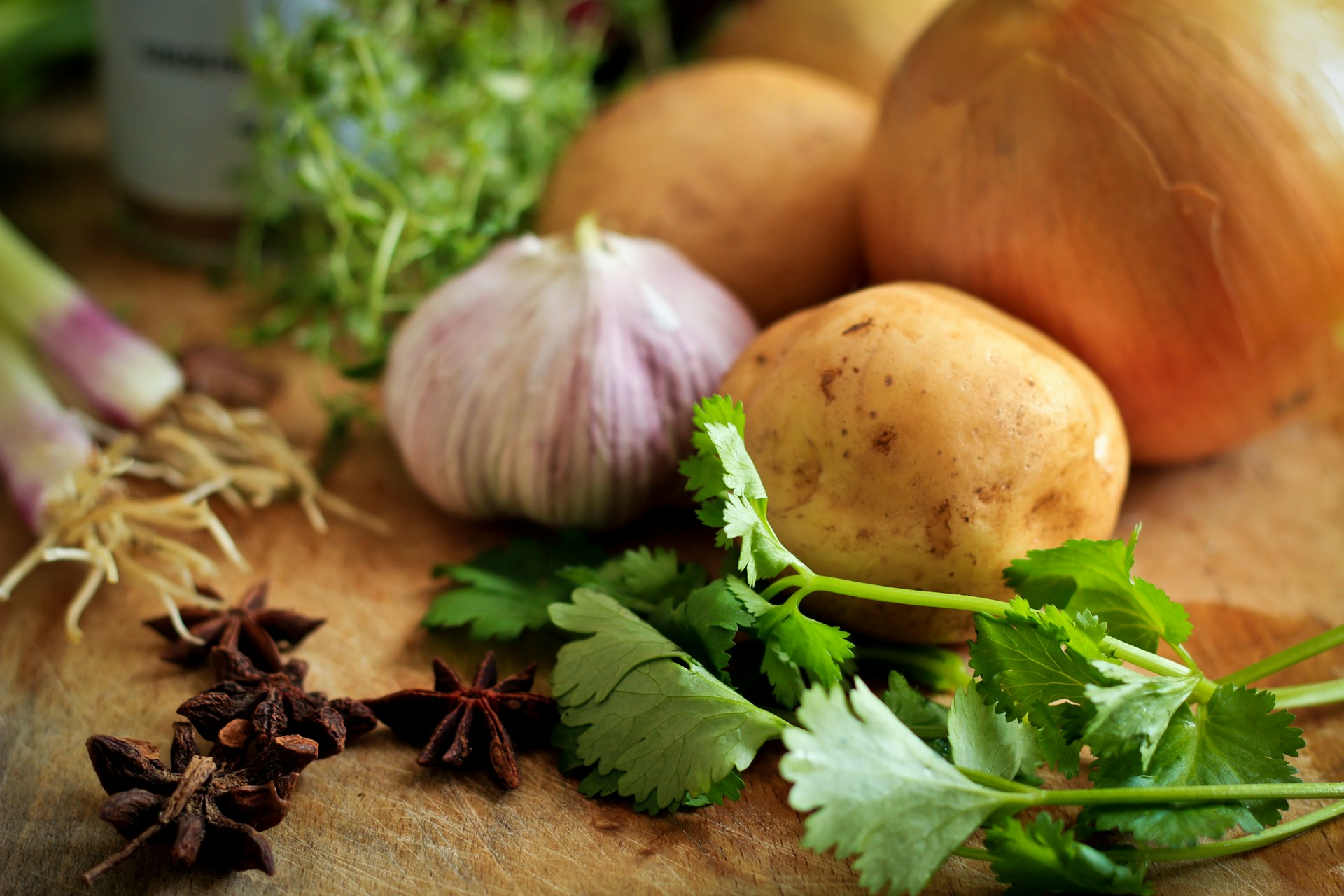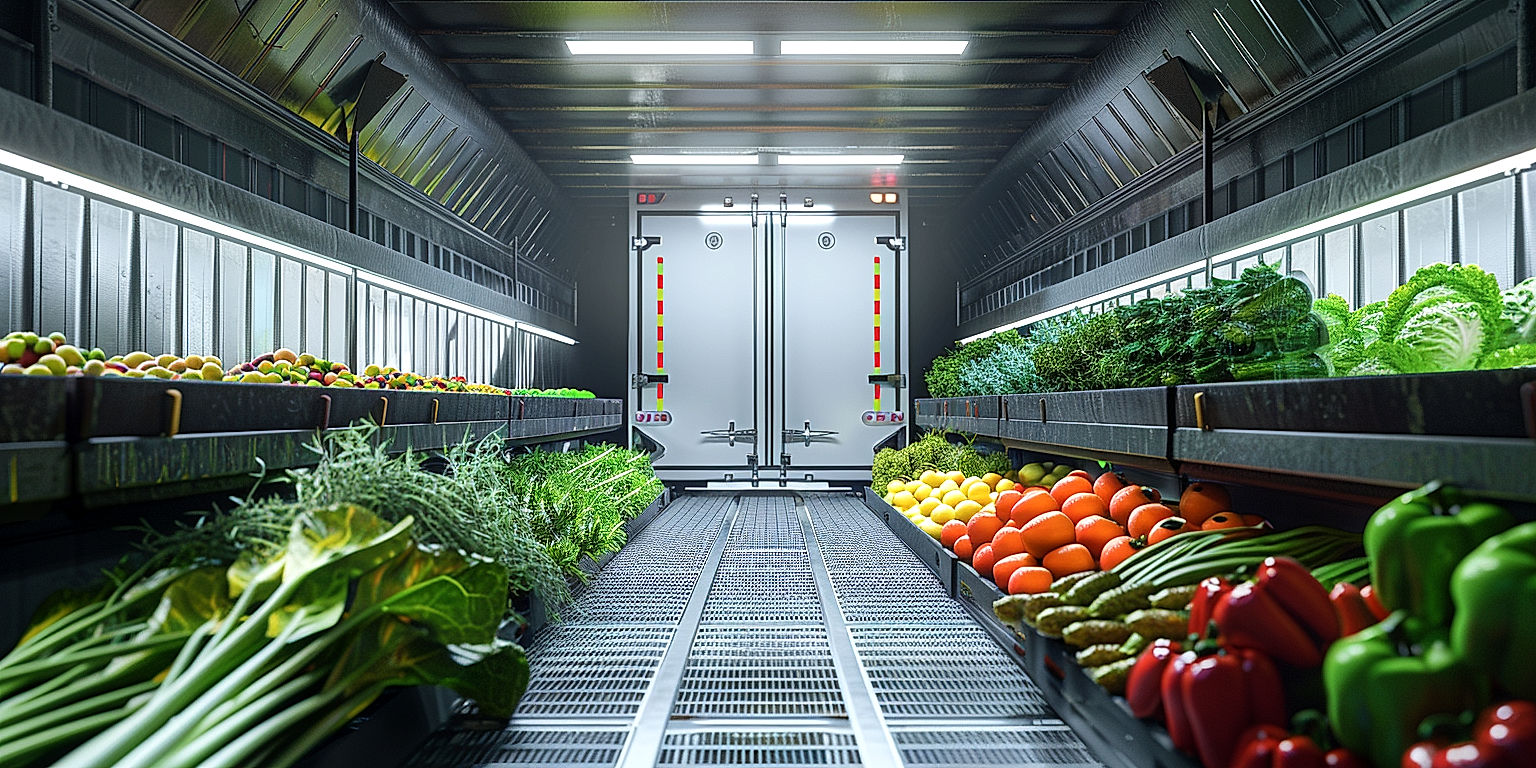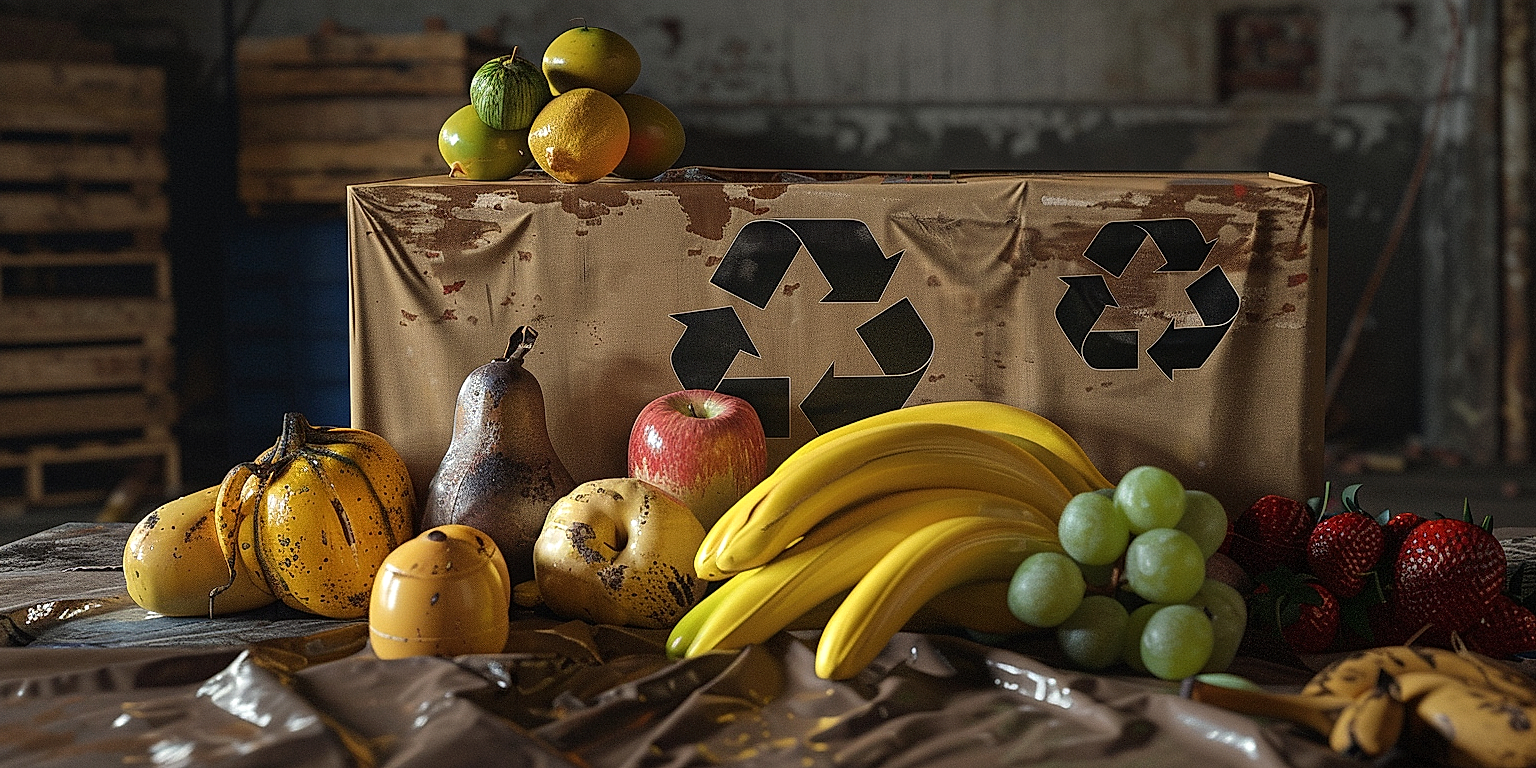As a crucial part of the global food supply chain, the safe transportation of produce cannot be overstated.
From the point of harvest to the supermarket shelf, every step requires utmost attention and care.
Each year, huge revenue losses are incurred due to spoilage and contamination that could be effectively minimized.
In this light, the implementation of scientifically-backed safety protocols becomes not just an option, but a necessity.
With escalating consumer consciousness about food safety, operators cannot afford to overlook these procedures.
Understanding and applying these safety measures is therefore integral to ensuring the produce remains fresh, healthy, and safe during transportation.
Safety Protocols For Protecting Produce During Shipping
1. Use Clean, Food-Grade Packaging Materials
The significance of using clean, food-grade packaging materials cannot be overstated in ensuring that produce delivered to consumers is always safe and fresh.
When it comes to protecting produce during shipment, the type of packaging used plays a significant role. The materials must be adequate to maintain the integrity and quality of the produce from the point of packaging to the point of delivery.
Food-grade packaging materials are designed to ensure the protection of the food from contamination, whether from chemicals, bacteria, or physical damage.
Such materials are typically made from substances that have been approved by the relevant health and safety authorities as safe for use with food products.
It’s critical to avoid using repurposed packaging materials that were not originally made for food. Such materials may contain harmful substances that can contaminate the produce.
There is a wide range of food-grade packaging materials available to suit different types of produce. These include bags, crates, boxes, trays, and wraps, among others.
The choice of packaging material to be used will typically depend on the specific type of produce being shipped.
For instance, vegetables that lose moisture quickly would benefit from breathable film wraps, while harder produce like apples could be efficiently shipped in ventilated crates or boxes.
It’s crucial that the chosen packaging does not react with the produce in any way, thereby compromising its quality or posing a health risk to consumers.
The role of cleanliness in food-grade packaging cannot be overstated.
All packaging materials must be thoroughly cleaned and sterilized before use to remove any potential contaminants.
Maintaining cleanliness is critical throughout the entire process, from packaging to shipping, to ensure that produce arrives at its destination in the best condition possible.
Regular audits, inspections, and reviews should be in place to ensure that the standards for cleanliness are always upheld.
The use of clean, food-grade packaging goes beyond just ensuring that health and safety standards are met. It also offers a means of boosting consumer confidence in the produce, thereby driving sales and success in the market.
Ultimately, the key goal is to ensure that consumers receive fresh, uncontaminated produce. This begins with the right choice and management of packaging materials.
2. Maintain optimal temperature and humidity during transport.
The act of maintaining optimal temperature during produce shipping is a crucial facet for ensuring maximum freshness and longevity.
This involves utilizing methods and technologies that can effectively control and monitor the temperature of the shipment area throughout the journey.
To this end, the use of refrigerated transports or cold chain logistics has become a necessity when transporting produce that is temperature-sensitive.
These refrigerated transports not only help maintain the desired temperature but also counter fluctuations that might occur due to changes in the external environment or climatic variations.
Besides temperature, output quality of fresh produce can be significantly impacted by the levels of humidity during transport.
Humidity control, thus, is another important variable to consider when discussing optimal storage conditions for produce during shipping.
Excessive humidity can contribute to microbial growth and reduced shelf life, while insufficient humidity can lead to the produce drying out.
Therefore, the perfect balance of humidity is essential and it is usually achieved by incorporating humidifiers in the transport vehicles and keeping a constant check on the humidity levels.
Hence, from a broader perspective, having optimal temperature and humidity control mechanisms in place not only helps maintain the integrity and marketability of the produce, but it also contributes to the reduction of food waste during shipping.
Moreover, in addition to the above, it is also necessary to ensure that the shipping containers themselves do not contribute to the temperature fluctuations.
This is usually achieved by ensuring the use of insulated containers or containers with a good thermal resistance score.
The logistics partner must also be equipped with advanced temperature tracking systems that can provide real-time insights into temperature and humidity levels, and trigger alarms if the conditions fall out of the desired range.
Regulations and standards set down by food safety organizations and regulatory bodies also have a significant role to play in ensuring that the aspect of temperature and humidity control during transport is taken care of effectively.
They lay down the guidelines and minimum requirements, thus helping set benchmarks for all the entities involved in the process – from the logistics partner to the final retailer.
So, maintaining optimal temperature and humidity during transport is an intricate but vital part of the entire supply chain, translating to better quality control and food safety.
3. Avoid Cross-Contamination with Raw or Damaging Materials
Ensuring the safety of produce during shipping is integral, and a crucial aspect of this is to avoid cross-contamination with raw or damaging materials.
One common form of cross-contamination in shipping occurs when produce is stored or transported with other food or non-food items that can contaminate it with pathogens, chemicals, or physical hazards.
The risk is higher, especially when shipping raw produce that can be easily contaminated by harmful bacteria or other harmful substances.
The use of clean shipping containers and implementing partitioning strategies during transport can heavily minimize the likelihood of cross-contamination.
Partitioning strategies refer to separating different items in shipment to reduce the risk of cross-contamination.
Additionally, it is highly advisable to disinfect all shipping containers, tools, and equipment before loading the produce to further reduce any risk of cross-contamination.
The produce should also be handled with thoroughly cleaned hands, or ideally, with gloves that are regularly changed or sanitized.
Furthermore, employees should be provided with proper training on the importance of food safety to reinforce the correct handling and storage procedures.
The training should include careful handling of the produce to prevent accidental damage that could create an opening for contamination.
Another critical factor is the proper disposal of waste materials within the shipping area since poor waste management can also lead to contamination.
Periodic audits and checks should be carried out within the shipping area to ensure consistent adherence to these cross-contamination prevention strategies.
Cross-contamination can have severe financial consequences for businesses due to potential product recalls or loss, in addition to posing a threat to public health.
Therefore, investing in preventative measures and thorough training programs will have far-reaching benefits in terms of both the economic performance and reputation of a shipping business.
In summary, avoiding cross-contamination during shipping requires a combination of cleanliness, employee training, and careful attention to packing strategies.
Ensuring the implementation of these measures will not only protect the produce from potential damage but also preserve the overall health and safety of the consumer.
4. Implement Pest Control in Shipping Areas
The process of transporting produce is fraught with a myriad of challenges, one of them being the need to implement effective pest control in shipping areas.
Pests can be a major issue in the shipping industry, causing damage to the goods and posing a threat to public health.
Therefore, it is paramount to have efficient and proactive pest control measures in place to protect the integrity and safety of the produce.
One of the initial steps of this process is to perform a comprehensive pest assessment of the shipping area.
Trained pest control experts should perform this assessment to identify potential pest infestations and to determine the most suitable countermeasures.
After the assessment, the implementation of proper pest management strategies is essential. This may include trapping, pesticide application, or creating barriers against pests.
Furthermore, continuous monitoring is vital, as this can alert shipowners to any ongoing or new pest infestations that need to be addressed.
In addition, the use of Integrated Pest Management (IPM) strategies can be incredibly effective in controlling pest populations in shipping areas.
IPM is a sustainable approach that combines various pest control methods to eradicate pests, reducing reliance on pesticides and mitigating potential environmental impact.
Moreover, staff training is a key aspect of pest control.
Employees should be educated about the signs of pest infestation, how to correctly use pest control equipment, and the proper steps to take in the event of a pest sighting.
Remember, the goal of pest control in shipping areas is to ensure that the produce remains uncontaminated during transport.
Therefore, strict adherence to the appropriate pest control protocols is critical.
To supplement these efforts, regular audits and inspections should be conducted to verify the efficiency of the pest control measures in place and to identify areas for improvement.
Safeguarding the cleanliness and safety of shipping areas from pests is not a one-off activity but a continuous process that requires vigilance, dedication, and the application of best practices.
To summarize, pest control is a crucial aspect of ensuring produce safety during transportation, and it requires a dedicated team, continuous monitoring, and the use of advanced techniques like IPM.
5. Monitor Loading and Unloading Activities Closely
The act of loading and unloading produce is a critical stage in the shipping process which requires stringent safety protocols.
Human error at this juncture can greatly compromise the safety and quality of the produce, hence the need for close monitoring.
Experienced and trusted workers should navigate this critical stage to limit chances of unintentional mishaps.
Training of loading staff on the best safety practices is a necessary investment in order to maintain the safety protocols.
Each piece of produce must be properly handled, ensuring delicate items are not crushed or damaged during the process.
All necessary machinery and equipment should be in optimal working condition to avoid unexpected breakdowns and delays that could harm the produce.
When unloading, it’s crucial that employees correctly follow stacking guidelines, as improper stacking can lead to damaged goods and safety risks.
Proper recording and tracking of the loading and unloading activities play an important role in maintaining safety protocols as well.
Such records can also be invaluable resources if a product recall or investigation is ever necessary.
Another crucial element to monitor during loading and unloading is timing – produce should not be left exposed to unfavorable climates for extended periods.
Especially during summer months, speed and efficiency in these activities is absolutely essential to avoid heat damage.
An accountability system for incidents resulting in damage to produce can help deter negligence, leading to safer practices.
Clear, consistent communication between all parties involved in the loading and unloading process ensures that safety protocols are maintained.
Employees should be encouraged to report any safety concerns or risks that may compromise the safety of the produce.
Ultimately, the goal is to ensure that the whole operation is executed in a manner that guarantees the utmost safety and preservation of the produce from the farm to the consumer’s table.
The Bottom Line
Ensuring the safety, cleanliness, and quality of food products during transport is paramount.
This can be achieved by using clean, food-grade packaging materials and by maintaining the optimal temperature and humidity conditions.
Preventing cross-contamination with raw or damaging materials is equally vital.
Implementing pest control in shipping areas guarantees a pest-free environment, thereby preserving the integrity of food items.
Moreover, closely monitoring loading and unloading activities can prevent damage or tampering of the products.
Thus, these stringent measures can ensure that valuable food products are delivered to end consumers in the best possible condition, contributing to their health and well-being.




